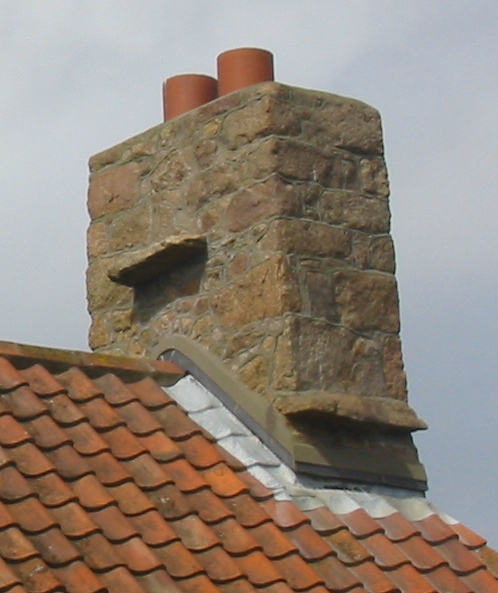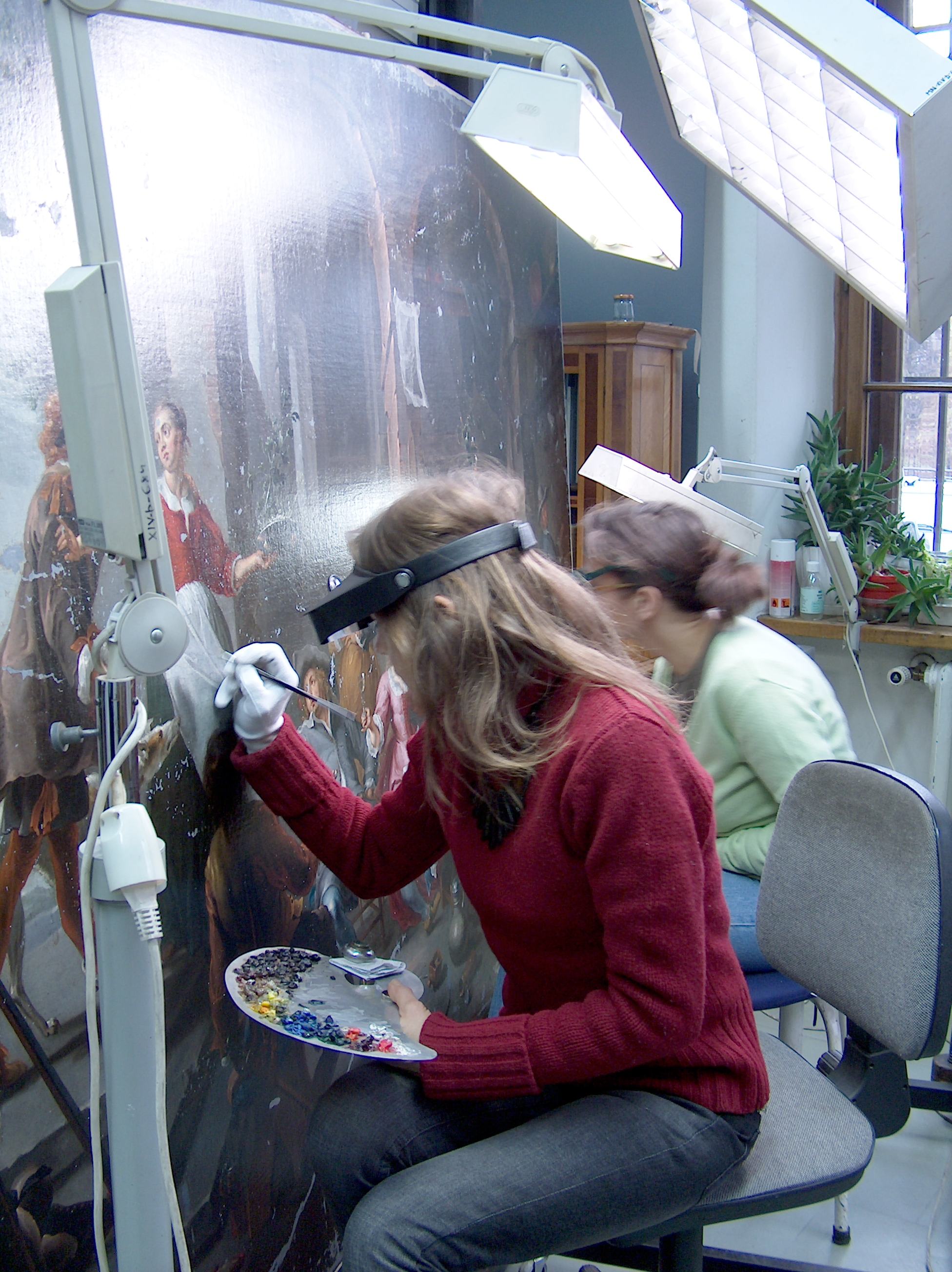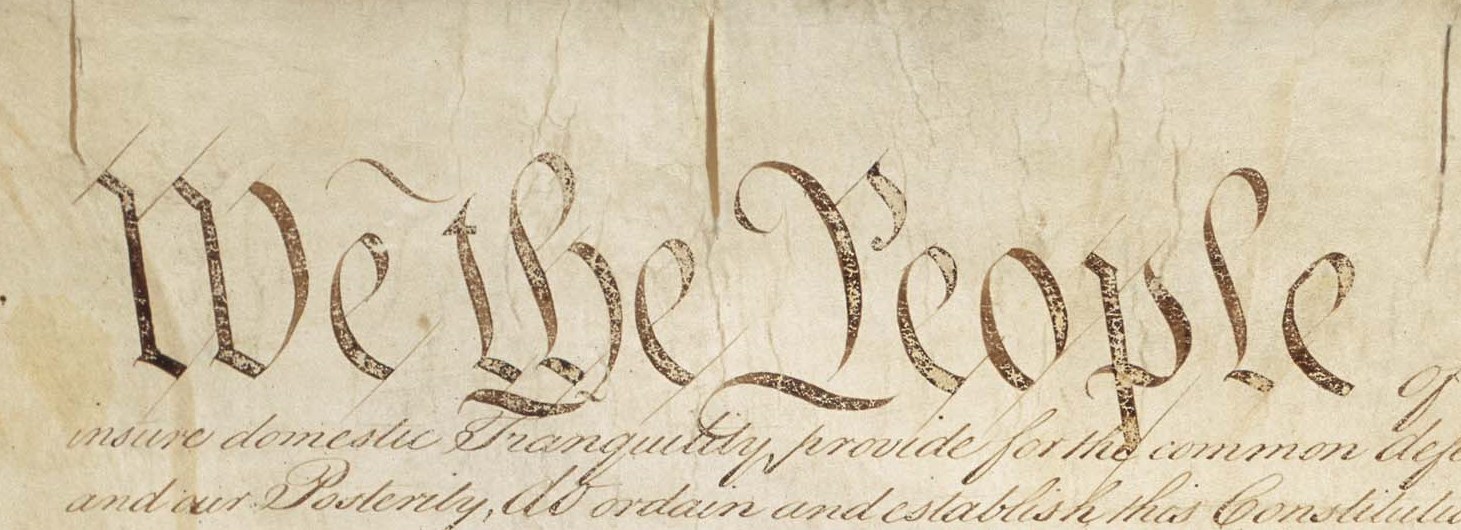|
We The Youth (Keith Haring)
''We the Youth'' is a 1987 mural by Keith Haring covering the west face of a private rowhouse in the Point Breeze neighborhood of Philadelphia, Pennsylvania. It was painted during a three-day workshop on 1, 2 and 3 September 1987. It is the only of Haring's collaborative public murals to remain in its original location. The mural was intended as a temporary placeholder until new row houses would eventually cover the wall of the mural. Description ''We the Youth'' is two stories high and is continuous across three sections of the wall, including the front and back half of the rowhouse as well as a section of the fence of the private backyard. The mural depicts dancing figures outlined in black on a white background. The outlines of the figures are filled in with blue, yellow, red and green, sometimes with a solid color and sometimes with patterns and symbols. The northmost section of the mural, painted on a fence, contains the words "We the Youth: City Kids of Phila + NYC" ... [...More Info...] [...Related Items...] OR: [Wikipedia] [Google] [Baidu] |
Keith Haring
Keith Allen Haring (May 4, 1958 – February 16, 1990) was an American artist whose pop art emerged from the New York City graffiti subculture of the 1980s. His animated imagery has "become a widely recognized visual language". Much of his work includes sexual allusions that turned into social activism by using the images to advocate for safe sex and AIDS awareness. In addition to solo gallery exhibitions, he participated in renowned national and international group shows such as ''documenta'' in Kassel, the Whitney Biennial in New York, the São Paulo Biennial, and the Venice Biennale. The Whitney Museum held a retrospective of his art in 1997. Haring's popularity grew from his spontaneous drawings in New York City subways—chalk outlines of figures, dogs, and other stylized images on blank black advertising spaces. After gaining public recognition, he created colorful larger scale murals, many commissioned. He produced more than 50 public artworks between 1982 and 1989, man ... [...More Info...] [...Related Items...] OR: [Wikipedia] [Google] [Baidu] |
New York City
New York, often called New York City or NYC, is the List of United States cities by population, most populous city in the United States. With a 2020 population of 8,804,190 distributed over , New York City is also the List of United States cities by population density, most densely populated major city in the United States, and is more than twice as populous as second-place Los Angeles. New York City lies at the southern tip of New York (state), New York State, and constitutes the geographical and demographic center of both the Northeast megalopolis and the New York metropolitan area, the largest metropolitan area in the world by urban area, urban landmass. With over 20.1 million people in its metropolitan statistical area and 23.5 million in its combined statistical area as of 2020, New York is one of the world's most populous Megacity, megacities, and over 58 million people live within of the city. New York City is a global city, global Culture of New ... [...More Info...] [...Related Items...] OR: [Wikipedia] [Google] [Baidu] |
Murals In Pennsylvania
A mural is any piece of graphic artwork that is painted or applied directly to a wall, ceiling or other permanent substrate. Mural techniques include fresco, mosaic, graffiti and marouflage. Word mural in art The word ''mural'' is a Spanish adjective that is used to refer to what is attached to a wall. The term ''mural'' later became a noun. In art, the word mural began to be used at the beginning of the 20th century. In 1906, Dr. Atl issued a manifesto calling for the development of a monumental public art movement in Mexico; he named it in Spanish ''pintura mural'' (English: ''wall painting''). In ancient Roman times, a mural crown was given to the fighter who was first to scale the wall of a besieged town. "Mural" comes from the Latin ''muralis'', meaning "wall painting". History Antique art Murals of sorts date to Upper Paleolithic times such as the cave paintings in the Lubang Jeriji Saléh cave in Borneo (40,000-52,000 BP), Chauvet Cave in Ardèche department of s ... [...More Info...] [...Related Items...] OR: [Wikipedia] [Google] [Baidu] |
Paintings By Keith Haring
Painting is the practice of applying paint, pigment, color or other medium to a solid surface (called the "matrix" or "support"). The medium is commonly applied to the base with a brush, but other implements, such as knives, sponges, and airbrushes, can be used. In art, the term ''painting ''describes both the act and the result of the action (the final work is called "a painting"). The support for paintings includes such surfaces as walls, paper, canvas, wood, glass, lacquer, pottery, leaf, copper and concrete, and the painting may incorporate multiple other materials, including sand, clay, paper, plaster, gold leaf, and even whole objects. Painting is an important form in the visual arts, bringing in elements such as drawing, composition, gesture (as in gestural painting), narration (as in narrative art), and abstraction (as in abstract art). Paintings can be naturalistic and representational (as in still life and landscape painting), photographic, abstract, narrative, sy ... [...More Info...] [...Related Items...] OR: [Wikipedia] [Google] [Baidu] |
Paintings In Philadelphia
Painting is the practice of applying paint, pigment, color or other medium to a solid surface (called the "matrix" or "support"). The medium is commonly applied to the base with a brush, but other implements, such as knives, sponges, and airbrushes, can be used. In art, the term ''painting ''describes both the act and the result of the action (the final work is called "a painting"). The support for paintings includes such surfaces as walls, paper, canvas, wood, glass, lacquer, pottery, leaf, copper and concrete, and the painting may incorporate multiple other materials, including sand, clay, paper, plaster, gold leaf, and even whole objects. Painting is an important form in the visual arts, bringing in elements such as drawing, Composition (visual arts), composition, gesture (as in gestural painting), narrative, narration (as in narrative art), and abstraction (as in abstract art). Paintings can be naturalistic and representational (as in still life and landscape art, lands ... [...More Info...] [...Related Items...] OR: [Wikipedia] [Google] [Baidu] |
Flashing (weatherproofing)
Flashing refers to thin pieces of impervious material installed to prevent the passage of water into a structure from a joint or as part of a weather resistant barrier system. In modern buildings, flashing is intended to decrease water penetration at objects such as chimneys, vent pipes, walls, windows and door openings to make buildings more durable and to reduce indoor mold problems. Metal flashing materials include lead, aluminium, copper, stainless steel, zinc alloy, and other materials. Etymology and related terms The origin of the term ''flash'' and ''flashing'' are uncertain, but may come from the Middle English verb ''flasshen'', 'to sprinkle, splash', related to ''flask''. ''Counter-flashing'' (or ''cover flashing'', ''cap flashing'') is a term used when there are two parallel pieces of flashing employed together such as on a chimney, where the counter-flashing is built into the chimney and overlaps a replaceable piece of ''base flashing''. Strips of lead used for flash ... [...More Info...] [...Related Items...] OR: [Wikipedia] [Google] [Baidu] |
Conservator-restorer
A conservator-restorer is a professional responsible for the preservation of artistic and cultural artifacts, also known as cultural heritage. Conservators possess the expertise to preserve cultural heritage in a way that retains the integrity of the object, building or site, including its historical significance, context and aesthetic or visual aspects.Defining the Conservator: Essential Competencies. (2003). Retrieved from http://www.conservation-us.org/docs/default-source/governance/defining-the-conservator-essential-competencies.pdf. This kind of preservation is done by analyzing and assessing the condition of cultural property, understanding processes and evidence of deterioration, planning collections care or site management strategies that prevent damage, carrying out conservation treatments, and conducting research.Careers in Conservation. (2014). Retrieved from http://www.conservation-us.org/publications-resources/careers-in-conservation/become-a-conservator#.VPPIxMaLTwN ... [...More Info...] [...Related Items...] OR: [Wikipedia] [Google] [Baidu] |
Kim Alsbrooks
Kim Alsbrooks is a Philadelphia-based artist. She was born in Charleston, South Carolina, in 1961, and lived briefly in Philadelphia during the 1990s. After living in Arizona for 10 years and in Charleston, South Carolina, she returned to Philadelphia in 2007. She has had a number of solo exhibitions, and has recently received considerable attention for her ''White Trash Family'' series, which includes over 600 miniatures painted on discarded trash. She is one of the winners of the West Prize. Education * 1996: Apprenticeship, The Fabric Workshop and Museum, Philadelphia, PA * 1988–1989: University of Southern Illinois, Carbondale, IL: Graduate studies in printmaking * 1986: University of Arizona, Tucson, AZ: BFA * 1981–1983: College of Charleston, Charleston, SC: Fine Arts Career Kim is currently self-employed, primarily contracted by the Mural Arts Program in Philadelphia as an artist. In Charleston, she worked in historic restoration; she is currently the owner of Lu ... [...More Info...] [...Related Items...] OR: [Wikipedia] [Google] [Baidu] |
Brandywine Workshop
The Brandywine Workshop and Archives (BWA) is a nonprofit organization in Philadelphia, Pennsylvania created to produce limited-edition screen-printed fine art. History BWA was founded by Allan L. Edmunds in 1972 as the Brandywine Graphic Workshop. Originally located in the predominantly Black and Hispanic area of North Philadelphia, the workshop registered as a 501(c)(3) tax-exempt cultural institution in 1974. The workshop moved to 1520 Kater Street in South Philadelphia then to 730 South Broad Street. The BWA provided educational programs as well as residencies for artists from around the United States. Prints from the BWA are in the collections of the Philadelphia Museum of Art, the Pennsylvania Academy of the Fine Arts, and the Harvard Art Museums The Harvard Art Museums are part of Harvard University and comprise three museums: the Fogg Museum (established in 1895), the Busch-Reisinger Museum (established in 1903), and the Arthur M. Sackler Museum (established in 1985 ... [...More Info...] [...Related Items...] OR: [Wikipedia] [Google] [Baidu] |
Pro Bono
( en, 'for the public good'), usually shortened to , is a Latin phrase for professional work undertaken voluntarily and without payment. In the United States, the term typically refers to provision of legal services by legal professionals for people who are unable to afford them. is also used in the United Kingdom to describe the central motivation of large organizations, such as the National Health Service and various NGOs which exist "for the public good" rather than for shareholder profit, but it equally or even more applies to the private sector where professionals like lawyers and bankers offer their specialist skills for the benefit of the community or NGOs. Legal counsel Pro bono legal counsel may assist an individual or group on a legal case by filing government applications or petitions. A judge may occasionally determine that the loser should compensate a winning pro bono counsel. Philippines In late 1974, former Philippine Senator Jose W. Diokno was released from ... [...More Info...] [...Related Items...] OR: [Wikipedia] [Google] [Baidu] |
Preamble To The United States Constitution
The Preamble to the United States Constitution, beginning with the words We the People, is a brief introductory statement of the Constitution's fundamental purposes and guiding principles. Courts have referred to it as reliable evidence of the Founding Fathers' intentions regarding the Constitution's meaning and what they hoped the Constitution would achieve. The preamble was mainly written by Founding Father Gouverneur Morris, a Pennsylvania delegate to the 1787 Constitutional Convention held at Independence Hall in Philadelphia. Text Drafting The Preamble was placed in the Constitution during the last days of the Constitutional Convention by the Committee on Style, which wrote its final draft, with Gouverneur Morris leading the effort. It was not proposed or discussed on the floor of the convention beforehand. The initial wording of the preamble did not refer to the people of ''the United States''; rather, it referred to people of the various states, which was the ... [...More Info...] [...Related Items...] OR: [Wikipedia] [Google] [Baidu] |
.jpg)







